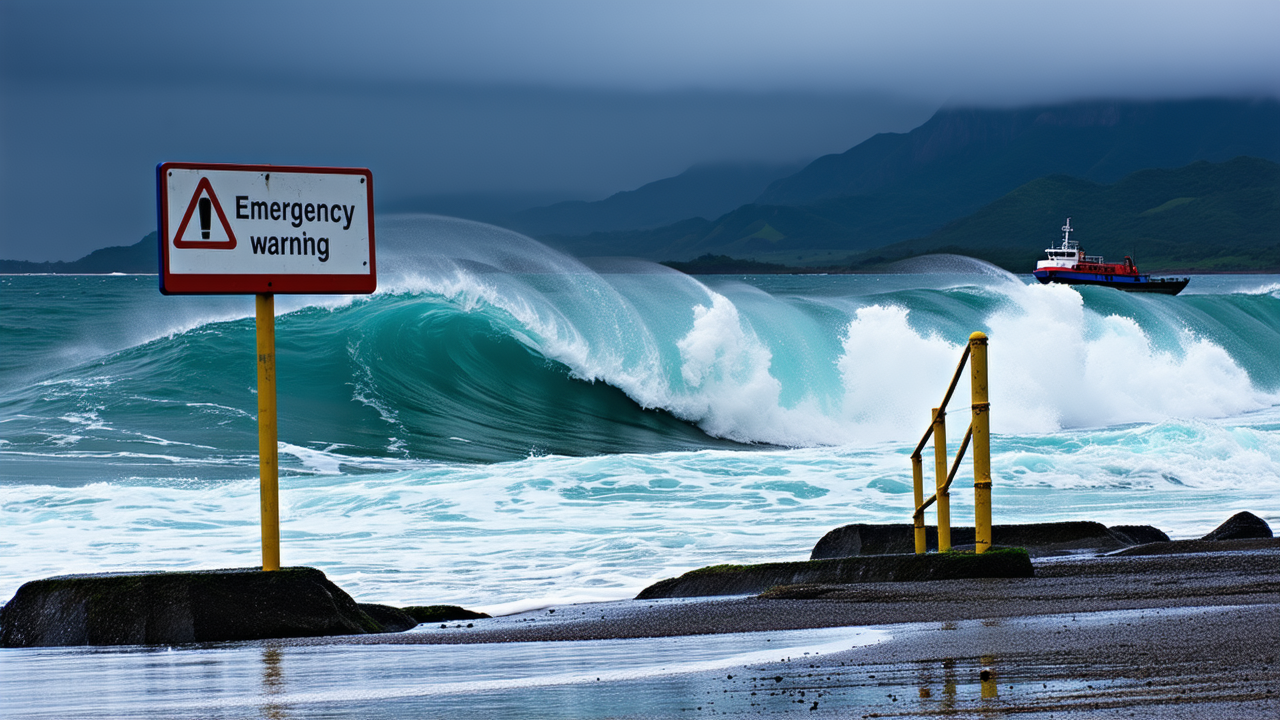Tsunami Warnings in New Zealand as First Currents Reach Shores, Commuter Ferry Canceled
Tsunami Warnings in New Zealand as First Currents Reach Shores, Commuter Ferry Canceled
A powerful 8.8 magnitude earthquake off the coast of Russia’s remote east triggered tsunami waves that reached multiple countries, including New Zealand, several Pacific nations, the U.S., Canada, and parts of South America. This quake is tied for the sixth-strongest ever recorded, and the strongest since the 2011 Tohoku earthquake in Japan, which triggered a devastating tsunami.
Emergency officials in New Zealand have issued urgent warnings to the public, emphasizing the high risk of tsunami surges. Despite the alerts, some people have been seen at beaches, including Takapuna Beach, where individuals were swimming and walking dogs despite the danger. Authorities have stressed that surges could be deadly, posing a serious threat to swimmers, surfers, fishermen, and anyone near the shore.
The National Emergency Management Agency (NEMA) warned that the first tsunami waves were unlikely to be the largest and that the threat to New Zealand’s coastline would remain until at least midday. The agency also mentioned that there had been a technical glitch in the alert system, leading some people to receive multiple texts, while others received none at all.
Transport disruptions have also been reported. Commuter ferries were canceled, and Cook Strait ferries were diverted to avoid the Tory Channel due to tsunami advisories. Three sailings were affected overnight, adding 40 minutes to the journey. In Wellington, the East by West ferry service was suspended until at least 10 a.m. on Thursday.
Emergency shelters were opened for people living on boats who had no alternative accommodation. In Northland, the forecast tsunami activity was expected to coincide with high tide, increasing the potential impact. Meanwhile, in Bluff, the earliest tsunami waves were not expected until at least 4:46 a.m.
Despite the risks, no significant damage has been reported so far, with online webcams monitored by RNZ showing no visible destruction overnight. However, the situation remains critical, and officials urge the public to avoid coastal areas and follow all emergency instructions.
International cooperation is also playing a role, with the New Zealand Ministry of Foreign Affairs advising citizens in affected regions to follow local authorities and ensure their safety. As the situation evolves, the focus remains on preparedness, communication, and public safety.
What’s next? The Interislander ferry service is set to reassess its operations after midday. Civil Defence teams continue to monitor the situation closely, and further updates are expected as the tsunami threat unfolds.
